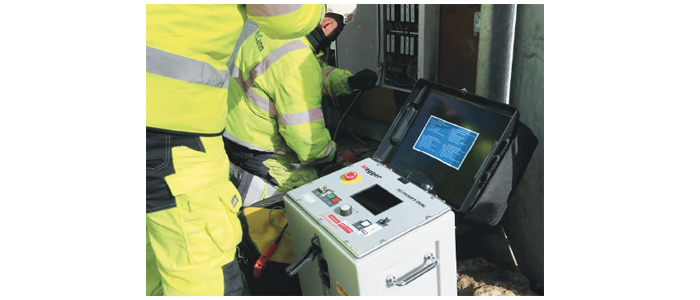- +61 7 3374 2877
- Email Us
Low voltage (LV) power cable circuits (<600 V) are the backbone of electrical distribution systems in almost all parts of the world, with the notable exception of North America, where this function is typically provided by medium voltage (MV) power cable circuits (5 to 35 kV).
Nevertheless, worldwide there are many more LV cables in use than MV cables, which is one of the reasons that failures in LV cables are more numerous. Aside from the statistical inevitability of more failures occurring in LV cables simply because there are more of them, there are other contributory factors. These include the multitude of types of cable construction, the wide variation in splice designs and the variety of assembly and work procedures that are in use.
This wide range of variations in construction means that locating faults on LV cables can be challenging. Unlike MV cables, where the vast majority of problems are pinhole or flashover faults that can be found using just a small range of test methods, LV cables require a much wider range of faultfinding techniques. Traditionally, this has made it necessary to use several separate pieces of test equipment as, until now, there has been no integrated LV fault locating system on the market, even though integrated systems for use on MV cables are readily available.
Megger’s positioning
Megger in Valley Forge USA started to offer its 4 kV EZ-Thump cable fault locator about ten years ago, followed by a 3 kV dual-capacitor version which was originally designed for EDF subsidiary ENEDIS (formerly ERDF), the French utility that operates much of France’s power distribution grid.
Both of the EZ-Thump models are integrated TDR (time-domain reflectometer) based systems that adopt the ‘tool kit’ design concept. In a single device, they provide all of the technologies needed for fault location on LV cables and circuits of all types, with the exception of highly branched circuits. In practice, these exceptions are infrequent: it is estimated that 80 % of circuits worldwide are point-to-point circuits or circuits with very short T branches of around 5 to 10 m. The preponderance of these types of circuits means that TDRbased fault location technologies are preferred by many network operators.

Despite widespread belief to the contrary, fault location on LV cables is by no means the same as fault location on MV cables but at a lower voltage. One reason for this is that almost all LV cables are multiconductor cables. It is important to understand the differences in the arrangement of phase and neutral conductors, cable design, insulating materials and, in some cases, the shielding and armor arrangements. These parameters, together with the resistance of the fault, influence which method of fault location is likely to be the most successful.
This article describes a step-by-step protocol for locating faults in LV cables, showing how this protocol was used in a real fault situation. The protocol is based on the use of Megger EZ-Thump 3 kV and 4 kV fault location systems.
The fault
The fault involved a section of four-conductor (three phase conductors, one neutral) residential LV cable with steel armor, as shown in Figure 1. The section of cable was approximately 100 m long and ran between two fuse cabinets (Figure 2). It serviced three homes, each via a T-splice. The splices were around 30 m apart.
Location protocol
Before fault location commenced, the fuses in each individual house service box within the cable section were removed (see Figure 2, where a typical box on the opposite side of the street is highlighted with a red arrow). Care was taken to maintain adequate clearance between the contact points in the fuse box (or termination box) so that the test voltage, which was higher than the normal operating voltage, could be safely applied.